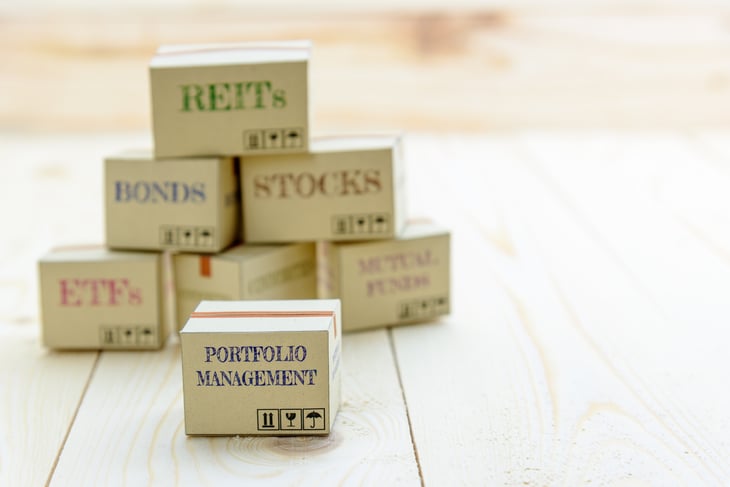
Editor's Note:
Investing for retirement can be a stressful proposition. For some, financial planning is little more than a guesstimate and a few prayers. For others, it is a well-calculated game plan.
Of course, no one can predict the future, so it’s hard to know how much money you and your family will need for the long haul.
That’s why protecting your savings is crucial … and why it’s heartbreaking to watch so many Americans gamble with their retirement savings because they don’t diversify their portfolios.
Diversification may be an unfamiliar term to you, or you could be familiar with the concept but aren’t sure you’re doing enough to protect the gains that you’ve already earned. No matter what camp you sit in, this guide will shed some light on portfolio diversification and arm you with resources to make better financial decisions.
Better to be safe than sorry with your investment portfolio

Diversification is simply the process of spreading your investment dollar across different types of investments. That means spending your investment dollars to purchase a combination of stocks, bonds, real estate, and other assets, rather than putting all of your money into one investment.
With portfolio diversification, you’re tapping into an effective long-term investment strategy that encourages your entire portfolio to grow through the ups and downs of a shifting market. A well-diversified portfolio ensures that your investment performance is balanced.
Diversifying also prevents you from relying too heavily upon any single investment. If one investment in your portfolio begins to slide, the losses can be offset by gains from other investments.
The 2 types of diversification that matter the most

With so many investment options to choose from, diversification options are practically endless. So many choices can be intimidating, but it all boils down to two basic types of portfolio diversification:
Diversification by asset class
You can spread your investment dollars across different asset classes, meaning a mix of stocks and bonds.
- Stocks allow you to own a piece of a company. This is where an investor usually finds the highest gains, but also the most risk.
- Bonds are loans to a company or government that pay a fixed rate of return over a specific timeframe. These offer more stability than stocks, but the returns are typically modest.
Diversification within asset classes
You can also spread your investment dollars across assets within the same class. For stocks, this could mean purchasing stock in companies that are in different industries, countries, and at different growth stages. For bonds, you can opt for a combination of Treasury bonds and municipal bonds.
Combining these two forms of portfolio diversification usually leads to steady and ongoing performance over time.
Here’s why diversification is the most important aspect of your investment portfolio

Think of diversification as a system of checks and balances within your portfolio. If one investment experiences a downturn, growth in other areas of the portfolio will compensate for the losses.
Let’s say a friend is talking up an exciting new company that promises to transform the pharmaceutical industry. It can be tempting to invest everything in what feels like a “sure thing.” But the risk of losing everything far outweighs the potential rewards. A single hiccup, like a CEO stepping down or regulatory hurdles, can send that company’s stock plummeting, and your entire investment along with it.
Had you invested a portion of your money in that company instead of everything, the same hiccup wouldn’t be catastrophic. Your portfolio would remain intact because the losses would be recouped over time by the other investments.
While the diversified approach won’t allow for a windfall from a single shooting star, it will protect you from losing everything if that “sure thing” goes bust. Remember, you’re aiming for long-term security, not short-term gambling.
Savvy investors do this to diversify their portfolios

Trying to diversify your portfolio yourself can be tricky, especially if you’re a casual investor. A single misstep like concentrating too much of your investment dollars in one asset class can jeopardize your retirement savings. As with so many important things in life, a little help never hurts.
The best way to diversify your portfolio is with the help of a registered investment adviser. A registered investment adviser can help you:
- Develop an investment plan, set goals, and outline the steps to get there.
- Identify investment opportunities that are appropriate for your goals.
- Monitor, evaluate, and report portfolio performance.
- Periodically change your investments to ensure performance stays on track.
Just like diversification, finding the right financial advisor can be intimidating. Wealthramp is an adviser matching service that takes the uncertainty and question marks out of finding a trustworthy adviser.
In just a few minutes, you'll be matched with up to 3 fiduciary financial advisers whose experience aligns with your goals and needs. You decide when to start the conversation with a potential adviser because Wealthramp never shares your contact information until you think it’s a match. And you’re never obligated to work with the advisers you are matched with.
It’s easy to fantasize about years of big returns from a shooting star. But in reality, it’s a diversified portfolio that will get you the long-term results you’re after.





Add a Comment
Our Policy: We welcome relevant and respectful comments in order to foster healthy and informative discussions. All other comments may be removed. Comments with links are automatically held for moderation.